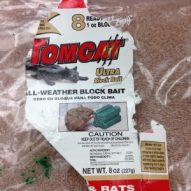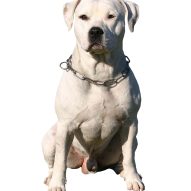SwheatScoop: The Cat’s Meow: Excited to join the feline expert team!
Excited to join SwheatScoop’s feline expert team! As an eco-friendly, crunchy (some same granola), Earth-hugging veterinarian, I’m a huge advocate of protecting our pets and our environment at the same time. You can check out the introduction...
Read MoreCyanosis in Dogs and Cats
What is cyanosis? Cyanosis is a bluish to red-purple tinge of the tissues, seen best in the gums and skin, and typically accompanying respiratory distress (i.e., difficulty breathing). When cyanosis is seen in dogs and cats, it’s an indicator of a severe lack of oxygen in the blood (called hypoxemia). It typically means that hemoglobin in the red blood cells doesn’t have enough oxygen or isn’t able to carry oxygen at all. Cyanosis can be classified...
Read MoreMouse and rat poisoning in dogs | Dr. Justine Lee
As the weather gets colder, mice and rats start seeking shelter in warm locations… in other words, your house! Unfortunately, the start of autumn means the start of mouse and rat poisoning, putting your dog or cat at risk. In today’s blog, we’ll talk about the 4 different types of active ingredients found in these mouse and rat poisons. These poisons all work (and kill) in different ways, so pay heed! While the most common type of mouse poison (e.g., brodifacoum, bromadiolone, etc.) often...
Read MoreBook review of “101 Essential Tips You Need to Raise a Happy, Healthy, Safe Dog”
Excited to have just finished reading Dr. Jason Nicholas‘ book 101 Essential Tips You Need to Raise a Happy, Healthy, Safe Dog. You can check out his website Preventive Vet, where he provides important information on common emergencies such as: Heat stroke Gastric dilatation-volvulus Lily poisoning High rise syndrome Feline urethral obstruction Puppy socialization In this short, 55 page, soft covered book, Dr. Nicholas provides simple tips that are short and sweet (The book is about...
Read MoreThe Dangers of Esophageal Foreign Bodies in Dogs
Your dog’s throat The esophagus is a thin sheet of muscle located within the thorax that connects the mouth with the stomach and aids in pushing food and water down into the stomach. Once in a while, if a dog (or rarely, a cat) swallows something too large – or too sharp – for it to pass out of the esophagus, it can become an esophageal foreign body. Esophageal foreign bodies typically get stuck in two locations in the esophagus: near the base of the heart or in the back (i.e., caudal)...
Read More




Recent Comments